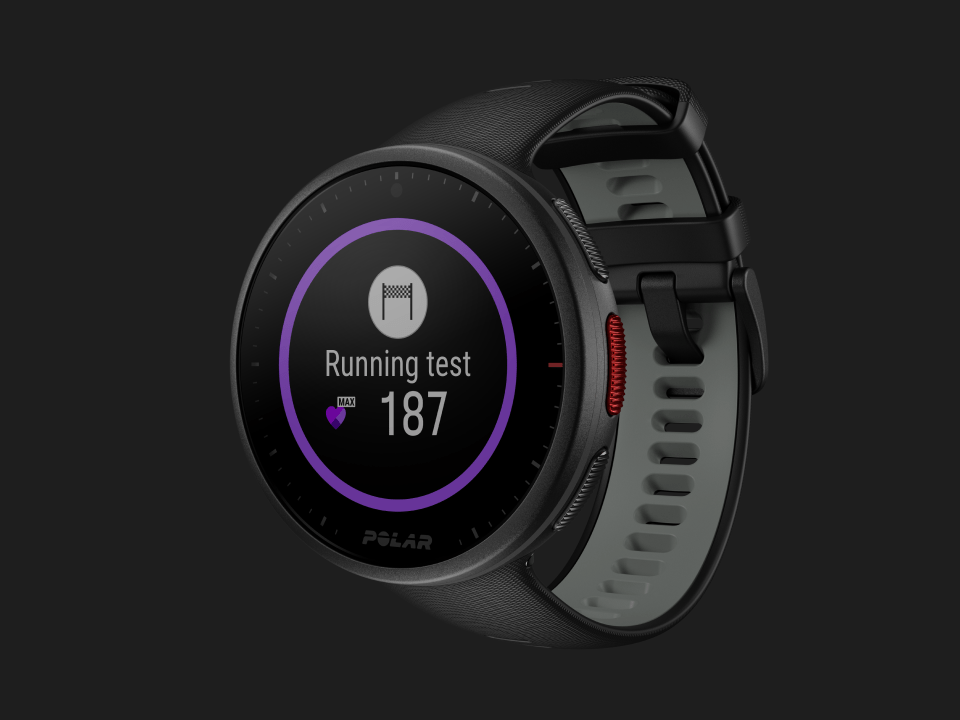Is there anything better than feeling fit and healthy? Not only do your workouts feel productive, but everyday life seems that little better, like you’re ready to tackle each new day. Understanding exactly where your fitness is at and how it has developed over time takes this feeling to the next level. A fitness assessment gives you these valuable insights into your progress and can motivate you to set new goals.
In this blog, we’ll look at the different types of fitness assessments and the benefits of doing these tests. Plus, we’ll explore the differences between maximal and submaximal tests and showcase the range of tests available on your Polar sports watch.
What is a fitness assessment?
A fitness assessment, also known as a fitness test or fitness evaluation, involves measuring specific metrics during exercise or rest to help determine your capacity for and progress with either certain sports or your general health, strength, and vigor.
There are many different forms of fitness assessments used in a variety of situations. There are tests that you can do personally to help track your fitness over time. There are assessments and measurements that a personal trainer or coach will do when you first begin working with them to understand your fitness level. Some tests are used for medical purposes, and some evaluations are required to qualify you for different jobs.
Why assess your fitness?
There is a range of reasons why you may test your fitness. They can include:
- identifying your level for a particular sport or workout
- assessing your current fitness
- tracking your progress
- determining your recovery status after an injury
- evaluating your fitness with a new trainer or coach
What are the benefits of a fitness assessment?
Depending on what you are hoping to achieve from your tests, they can provide benefits such as:
- Motivates you
- Can assist with identifying goals
- Boost your sense of achievement
- Helps you understand areas of improvement
- Gives you an idea of how you may perform in a race (or if you are ready for one to begin with)
- Aids your PT in tailoring the proper training for you
Types of fitness assessments
Fitness tests are used to assess four different areas of health and physical vigor:
- Aerobic (cardiovascular) fitness. Example: what is your heart rate after a short run?
- Muscular strength and endurance. Example: how many push-ups can you do in a minute?
- Flexibility. Example: can you touch your toes?
- Body composition. Example: what is your body fat percentage?
Different fitness assessments will use various tools and metrics to determine the results.
Maximal vs. submaximal tests
When it comes to aerobic fitness tests, such as the Polar fitness tests detailed below, there are two approaches: a maximal or a submaximal test.
As the name suggests, a maximal test is about testing the maximum results. So, for example, with the Polar Running Performance test, you can do this as a maximal test to determine your heart rate, speed & power zones. This assessment would be achieved by running at your maximum heart rate (HR max) to understand your health and fitness level.
However, this test can also be completed as a submaximal test. That means not going to the maximum but instead going part of the way there to estimate and predict what your maximal results would be. So, again with the Polar Running Performance test, you can run up to 85% of your HR max, and your results will be calculated based on this level of testing.
The difference between a maximal and a submaximal fitness test is that a maximal test is accurate but can sometimes put people at risk if performed without medical monitoring (for example, running at your HR max may not be a good idea if you have a heart condition). In comparison, submaximal tests are less accurate but safer, faster, and easier to repeat regularly.
Try Yourself: Polar Fitness Tests
Regularly assessing your cardio fitness level is a phenomenal way to track your progress and stay motivated. After all, the most common aerobic fitness tests tell you a single number—VO2max—that is easy to understand, follow over time, and compare with people of the same age.
Before wearable technology, measuring VO2max required going into a lab and running all out on a treadmill while being connected to a bunch of sensors and wearing a mask to measure oxygen uptake. Still today, this is the most accurate method to estimate VO2max, but the latest sports watches, fitness trackers, and heart rate sensors have made it a lot of easier to assess cardio fitness at anytime, anywhere, and still get reliable results.

A suite of Polar tests
Polar watches are equipped with a suite of aerobic fitness tests that let people of all fitness levels assess their cardio fitness in an easy, convenient way.
Rightly so, you might be wondering why there are different types of fitness tests if all of them measure aerobic fitness. The reason is simple. Not all tests suit everyone. If you haven’t run in a long time, or at all, completing a running test can be very demanding. Even if you’re a runner, maximal tests are tough, like a race day effort, so you’re not likely to repeat such test more than a few times a year. Therefore, a less demanding fitness test, like Polar Walking Test, can provide additional data that you can compare more frequently.
Polar Fitness Test vs Walking Test vs. Running Performance Test
Here’s how the different Polar tests compare:
Fitness Test – Difficulty: Easy

Just lie down, relax, and see your VO2max. It’s a quick and comfortable way to check your fitness level for those who are starting their fitness level.
Walking Test – Difficulty: Normal

Walk briskly for 15 minutes and see your aerobic fitness level (VO2max). This test is recommended for active people that are interested in tracking their fitness level but are not ready to take Running performance test. The Walking Test is not the best option for those who are highly fit.
Cycling Performance Test – Difficulty: Hard

It reveals your power level, your VO2max, helps you keep track of how your performance is developing, and to find out your unique training zones for cycling sports. Less experienced cyclist can take a shorter version of this test.
Running Performance Test – Difficulty: Advanced

Frequent and experienced runners can go all out and find out their VO2max, maximum heart rate, and their heart rate training zones.
Additionally, the Polar Orthostatic Test and the Leg Recovery Test can help you assess how your body is recovering from exercise.
So, what’s your fitness level?
As you can see, regularly assessing your fitness is a great way to understand how your body is performing and set goals for your future workouts.
- There are many reasons for and benefits to regularly assessing your fitness.
- The main types of fitness assessments include aerobic (cardiovascular) fitness, muscular strength and endurance, flexibility, and body composition.
- Maximal tests assess your maximum capacity, while submaximal tests assess a percentage of your capacity and use this to calculate your maximum results.
- Polar has a variety of fitness assessments, including the fitness test (heart rate at rest), walking test, running performance test, cycling performance test, and leg recovery test.
Remember, a fitness assessment is designed to be tested with some regularity. You can schedule them in your calendar so you always remember to stay up to date with your fitness.
If you liked this post, don’t forget to share so that others can find it, too.
Or give it a thumbs up!
I like this article
Please note that the information provided in the Polar Blog articles cannot replace individual advice from health professionals. Please consult your physician before starting a new fitness program.




